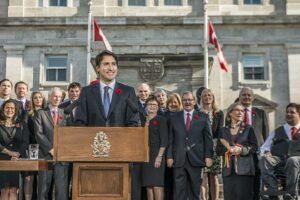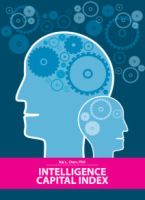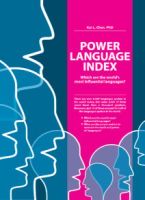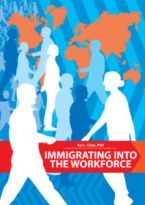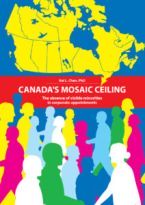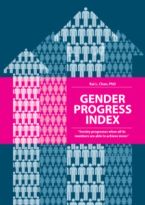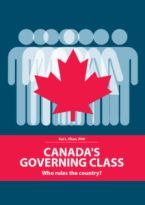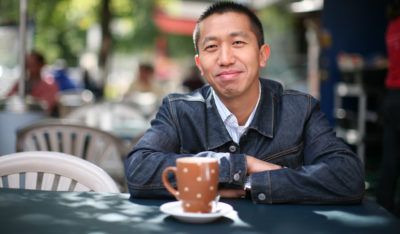
Trudeau Cabinet reflects more diversity in new House
Trudeau Cabinet reflects more diversity in new House
By CHRISTOPHER GULY |
Published: Monday, 11/16/2015 12:00 am EST
While women represent half of the 30-member Cabinet, they only account for 27 per cent of the Liberal caucus, or 50 of the record 88 female MPs elected from all five parties in this year’s election.
Prime Minister Justin Trudeau’s Cabinet might not perfectly reflect Canadian society, but it’s a better representation of the country’s diversity than the composition of the last Parliament, according to political economist and self-described “knowledge junkie” Kai Chan, an expatriate Canadian currently based in the United Arab Emirates (UAE).
While he said that the share of female, minority, and French-speaking ministers in the new Liberal Cabinet, excluding Mr. Trudeau (Papineau, Que.) are essentially in line with their share in national demographics (at half, a quarter, and a quarter, respectively), there are no members from East Asian, black, Southeast Asian or Latin American communities, despite the fact those groups together account for 13 per cent of the Canadian population (and half of the minority population) with East Asians—the single largest ethnic minority group—representing 5.3 per cent.
“There are also no Southeast Asians in the Liberal caucus, but there are some blacks,” said Mr. Chan in an interview from Dubai where he works as a government and public policy advisor in the UAE Prime Minister’s Office. Among the record four African-Canadians elected this year to sit as Liberal MPs is lawyer Ahmed Hussen (York South-Weston, Ont.), the first Somali-Canadian to serve in Parliament. No Afro-Canadians sat in Mr. Harper’s caucus, which for the record had East Asian representation.
There are also a record number of four Sikhs in the Trudeau Cabinet, including one woman, Bardish Chagger (Waterloo, Ont.), the new minister of Small Business and Tourism, and Canada’s first Sikh National Defence Minister, Harjit Singh Sajjan (Vancouver South, B.C.). They account for more than half (57 per cent) of the minority positions in Cabinet, as Mr. Chan pointed out.
They are also among the 23 MPs of South Asian origin elected to the House of Commons last month; 20 of them (18 Liberals and two Conservatives) speak Punjabi, now the third most common language in the Lower Chamber.
This year’s federal election resulted in a record 47 visible minority MPs elected, representing 14 per cent of MPs who will serve in the 42nd Parliament.
That number still doesn’t quite reflect the national picture, where minorities comprise nearly 26 percent of Canada’s population. But it’s an improvement from the last Parliamentary session where visible minorities only accounted for 12 percent of MPs—and Senators, according to Mr. Chan’s analysis.
However, he pointed out that despite Mr. Trudeau’s accomplishment in achieving gender balance in his Cabinet, his caucus doesn’t quite reflect reality.
While women represent half of the 30-member Cabinet, they only account for 27 percent of the Liberal caucus, or 50 of the record 88 female MPs elected from all five parties in this year’s election. Still, fewer female Liberal MPs ended up as backbenchers compared to their 133 male counterparts from whom Prime Minister Trudeau chose 15 to serve in his Cabinet.
Whether or not that was fair can be debated, said Mr. Chan. However, he added that mostly male Cabinets from the past didn’t always have the “most competent” men among them. This time, however, Mr. Trudeau has a stellar female team surrounding him.
All of the women in Cabinet have university degrees. Two of them are physicians: Indigenous and Northern Affairs Minister Carolyn Bennett (Toronto-St. Paul’s, Ont.) and newcomer Jane Philpott (Markham-Stouffville, Ont.), the first medical doctor to be named federal Health Minister.
There are other firsts among Prime Minister Trudeau’s 15 female Cabinet members.
Lawyer Jody Wilson-Raybould (Vancouver Granville, B.C.) is Canada’s first indigenous minister of Justice and Attorney General, and rookie Maryam Monsef (Peterborough-Kawartha, Ont.), the minister of Democratic Institutions, is the country’s first Afghan-born MP.
Mr. Chan found some other gender differences in his web-search Cabinet analysis.
There are more female ministers (eight) from Ontario compared to three male minisers from the province. (Not surprisingly with the Liberal red wave sweeping 80 of Ontario’s 121 ridings, the province has the most—11—ministers, or one-third of the Trudeau Cabinet.)
The women in Cabinet are also younger; three are between the ages of 30 and 39 compared to one man: Navdeep Singh Bains (Mississauga-Milton, Ont.), minister of the newly-named Innovation, Science and Economic Development portfolio.
Within the Cabinet’s 40-to-49 age group, there are seven women and four men—and the gender ratio reverses as ages increase: four men and two women (aged 50 to 59), and six men and half as many women 60 years of age and older.
There are also differences regarding Cabinet member’s previous professions.
Only women (four) listed social or community worker as their profession prior to entering federal politics. An equal number of men come from the world of finance, including the man who oversees the government’s books, Finance Minister William Francis (Bill) Morneau (Toronto Centre, Ont.), who led Canada’s largest human resources company, Morneau Shepell and served as chair of economic think-tank, the C.D. Howe Institute.
Most ministers (seven) are lawyers, with a four-three, female-male split. More men (three) were professors than women (one), and more men (five) were businesspeople/owners compared to one woman.
There is also an equal two-two gender split of Cabinet members who listed author-journalist as a profession.
Mr. Chan discovered that in terms of academia, arts were the most common field of study for 10 ministers (six women, four men), followed by science, technology, engineering and mathematics for eight (five men, three women).
The latter is significant for 40-year-old, Chinese-born, Toronto-raised Mr. Chan, who was “inspired” to embark on his parliamentary demographic study last year after reaching the conclusion that now-former prime minister Stephen Harper’s Conservatives led the “most anti-science and anti-intellectual government” in his lifetime by its “muzzling of scientists and getting rid of the long-form census.” So, Mr. Chan wanted to know how many Parliamentarians had a background in science or technology. He discovered less than one in 12 had such qualifications among those with declared higher-education specializations.
“When these decision-makers debate the merits of initiatives, law or policies that affect…the scientific community (and society at large), the opinions of Parliament are likely to be uninformed and/or not reflective of the general population,” Mr. Chan wrote in his September 2014 “Canada’s Governing Class” report.
Given his academic credentials (a PhD in economics, specializing in monetary policy, from Princeton University) and the absence of an East Asian minister in the Trudeau Cabinet, Mr. Chan is asked whether a run at Canadian federal politics lies in his future, and replied like a politician.
“Canada benefits when you have more voices at the table.”
news@hilltimes.com
The Hill Times
Article as it appeared on The Hill Times.
© 2015 Hill Times Publishing All rights reserved. 69 Sparks St. Ottawa ON K1P 5A5

